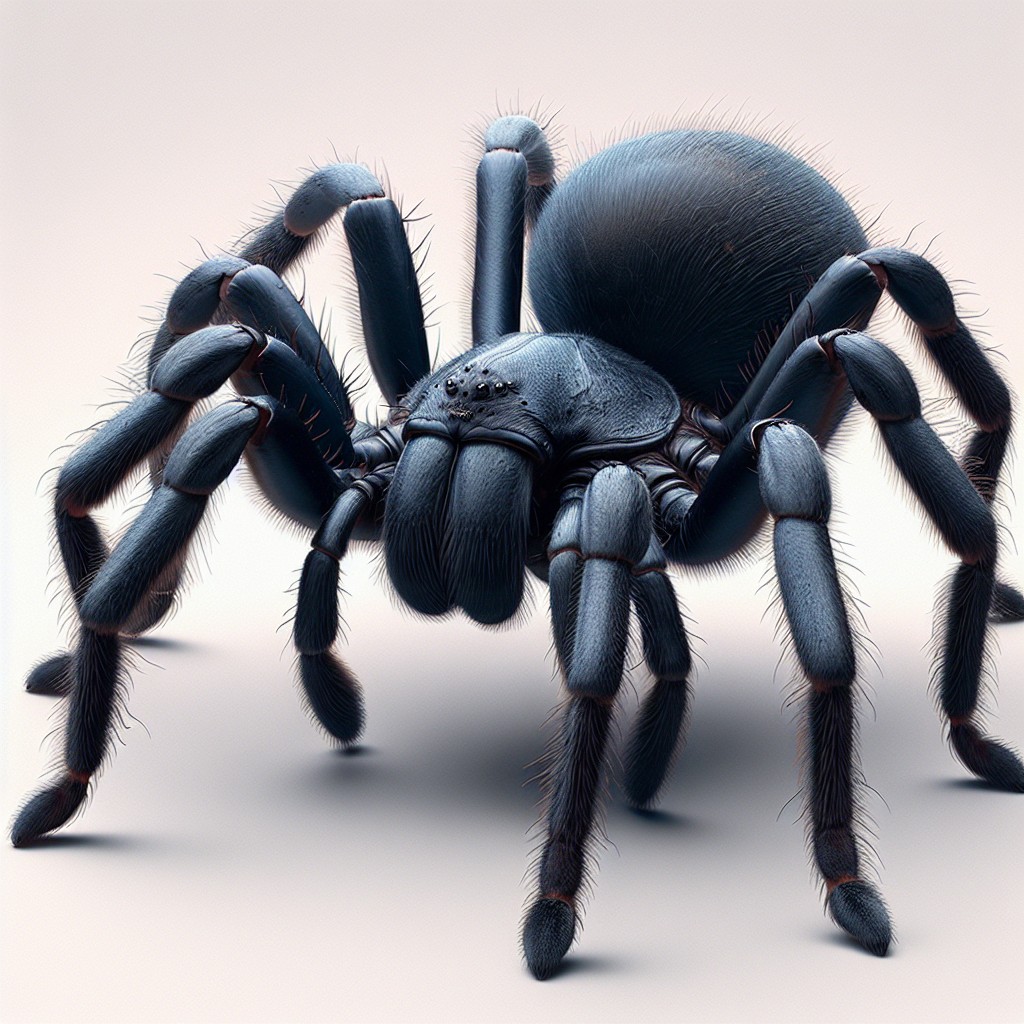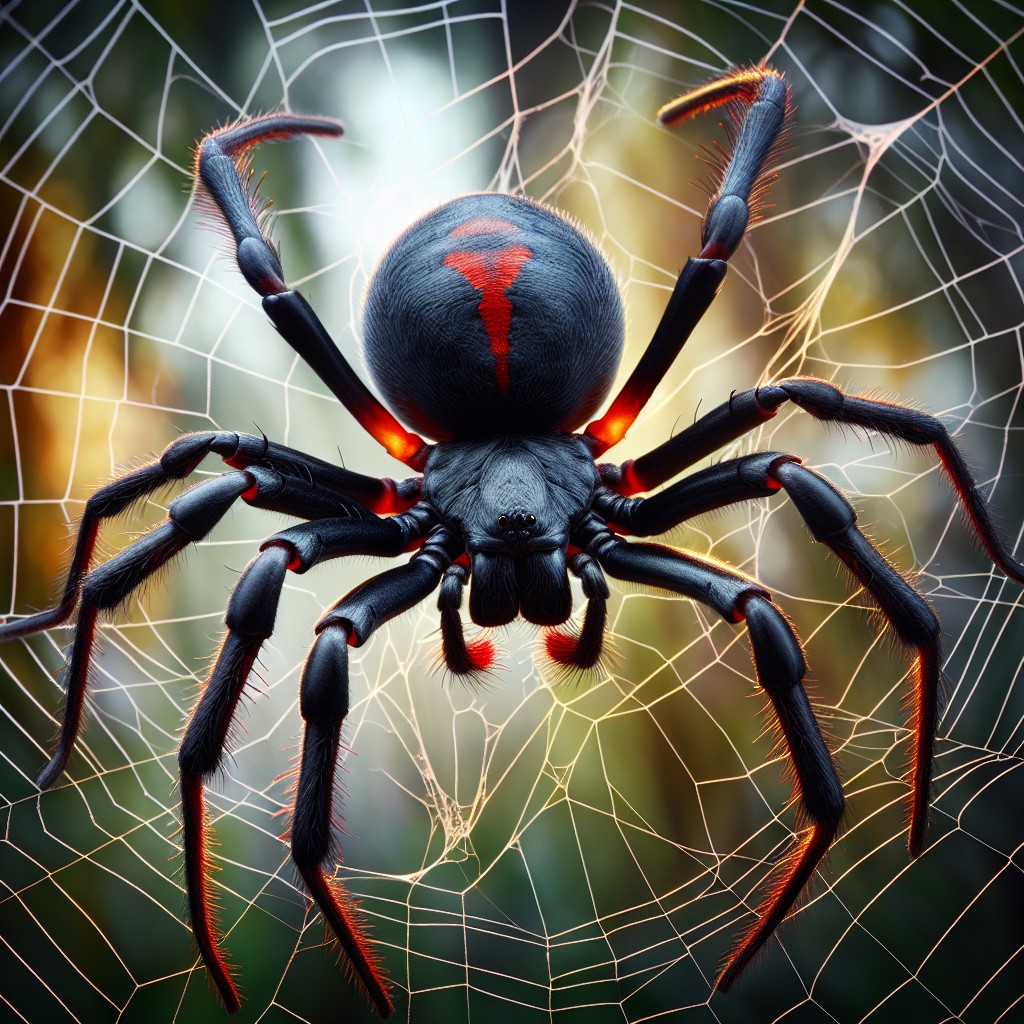
The Brazilian Wandering Spider, also known as the banana spider or armed spider, is a highly venomous spider that is native to South and Central America. It belongs to the genus Phoneutria, which means “murderess” in Greek, and is considered one of the most dangerous spiders in the world. The spider gets its name from its wandering behavior, as it does not build a web to catch its prey like other spiders.
The Brazilian Wandering Spider is known for its large size, with a leg span that can reach up to 6 inches. It has a brown or tan body with distinctive markings on its abdomen. The spider is also known for its aggressive behavior and quick movements, making it a formidable predator.
Key Takeaways
- The Brazilian Wandering Spider is one of the most venomous spiders in the world.
- They can be identified by their brown or black color, hairy legs, and distinctive red or pink marking on their abdomen.
- The venom of the Brazilian Wandering Spider can cause muscle spasms, paralysis, and even death in severe cases.
- Symptoms of a bite include pain, swelling, sweating, and difficulty breathing.
- Treatment for a bite includes seeking immediate medical attention, administering antivenom, and managing symptoms.
How to identify a Brazilian Wandering Spider
The Brazilian Wandering Spider can be identified by its physical characteristics. It has a large, robust body with long legs and a distinctive pattern on its abdomen. The spider’s body is usually brown or tan in color, with darker markings that resemble a violin shape on its abdomen.
One way to differentiate between male and female Brazilian Wandering Spiders is by looking at their pedipalps, which are appendages near their mouth used for mating. Male spiders have enlarged pedipalps that resemble boxing gloves, while female spiders have smaller, less pronounced pedipalps.
The venom of the Brazilian Wandering Spider
The venom of the Brazilian Wandering Spider is extremely potent and can cause severe symptoms in humans. It contains a neurotoxin called PhTx3, which affects the nervous system and can lead to paralysis. The venom also contains other toxins that can cause pain, inflammation, and tissue damage.
The potency of the venom varies depending on the species of Brazilian Wandering Spider. Some species have venom that is more potent than others, but all are considered dangerous to humans. The venom is primarily used to immobilize and kill the spider’s prey, which includes insects, small mammals, and even other spiders.
Symptoms of a Brazilian Wandering Spider bite
| Symptom | Description |
|---|---|
| Pain | Intense pain at the site of the bite |
| Swelling | Swelling and redness around the bite area |
| Sweating | Excessive sweating |
| Nausea | Feeling of nausea and vomiting |
| High blood pressure | Increased blood pressure |
| Irregular heartbeat | Irregular heartbeat or palpitations |
| Paralysis | Paralysis or muscle weakness |
| Death | In rare cases, death may occur |
When a person is bitten by a Brazilian Wandering Spider, they may experience a range of symptoms. Common symptoms include severe pain at the site of the bite, swelling, redness, and sweating. In some cases, the venom can also cause muscle spasms, difficulty breathing, and an irregular heartbeat.
The severity of the symptoms can vary depending on the age and health of the person bitten. Children and older adults are more susceptible to severe symptoms due to their weaker immune systems. People with underlying health conditions or compromised immune systems may also experience more severe symptoms.
Treatment for a Brazilian Wandering Spider bite
If someone is bitten by a Brazilian Wandering Spider, it is important to seek medical attention immediately. In the meantime, there are some first aid measures that can be taken to help alleviate the symptoms. These include applying a cold compress to the bite area to reduce swelling and taking over-the-counter pain medication to manage pain.
Medical treatment for a Brazilian Wandering Spider bite may include the administration of antivenom, which is a serum that counteracts the effects of the venom. Other treatments may include pain medication, muscle relaxants, and intravenous fluids to prevent dehydration.
Prevention of Brazilian Wandering Spider bites
To avoid encounters with Brazilian Wandering Spiders, it is important to take certain precautions. When traveling to regions where the spider is commonly found, it is advisable to wear protective clothing such as long sleeves and pants. It is also important to shake out clothing and shoes before putting them on, as spiders may hide in them.
To protect your home from infestations of Brazilian Wandering Spiders, it is important to keep your living space clean and clutter-free. Seal any cracks or openings in walls, windows, and doors to prevent spiders from entering. Regularly inspect and clean outdoor areas such as gardens and sheds to remove potential hiding spots for spiders.
Where to find Brazilian Wandering Spiders
Brazilian Wandering Spiders are native to South and Central America and can be found in a variety of natural habitats. They are commonly found in tropical rainforests, but can also be found in other environments such as grasslands, swamps, and caves. The spiders are known for their ability to adapt to different habitats and can even be found in urban areas.
In terms of regions, Brazilian Wandering Spiders are commonly found in countries such as Brazil, Costa Rica, Venezuela, and Colombia. They have also been reported in other countries in South America, as well as in parts of Central America and the Caribbean.
The dangers of untreated Brazilian Wandering Spider bites
Untreated Brazilian Wandering Spider bites can have serious long-term effects on the body. The venom can cause permanent damage to the nervous system, leading to muscle weakness, paralysis, and even death. In severe cases, the venom can also cause respiratory failure or cardiac arrest.
In addition to the physical effects, untreated bites can also have psychological effects on the victim. The fear and anxiety associated with being bitten by a highly venomous spider can lead to long-term psychological trauma.
The importance of seeking medical attention for spider bites
It is crucial to seek medical attention immediately if you are bitten by a Brazilian Wandering Spider or any other venomous spider. Medical professionals have the knowledge and resources to properly diagnose and treat spider bites. They can administer antivenom if necessary and provide supportive care to manage symptoms.
Seeking medical attention promptly can greatly improve outcomes for spider bite victims. Early treatment can help prevent the spread of venom throughout the body and reduce the risk of complications. It is always better to be safe and seek medical help, rather than risk the potentially serious consequences of an untreated spider bite.
Tips for staying safe in areas with Brazilian Wandering Spiders
If you are traveling to regions where Brazilian Wandering Spiders are commonly found, it is important to take precautions to stay safe. Wear protective clothing such as long sleeves and pants, and use insect repellent to deter spiders. Shake out clothing and shoes before putting them on, and avoid walking barefoot in areas where spiders may be present.
In your home or workplace, take steps to prevent infestations of Brazilian Wandering Spiders. Keep your living space clean and clutter-free, and seal any cracks or openings where spiders may enter. Regularly inspect and clean outdoor areas to remove potential hiding spots for spiders.
By following these tips and being aware of your surroundings, you can reduce the risk of encountering a Brazilian Wandering Spider and minimize the chances of being bitten. Remember, prevention is always better than cure when it comes to dealing with highly venomous spiders like the Brazilian Wandering Spider.
FAQs
What is a Brazilian Wandering Spider?
A Brazilian Wandering Spider, also known as Phoneutria spp., is a venomous spider found in South and Central America.
What is the size of a Brazilian Wandering Spider?
The size of a Brazilian Wandering Spider can range from 1 to 5 inches in length.
What is the venom of a Brazilian Wandering Spider?
The venom of a Brazilian Wandering Spider contains a potent neurotoxin that can cause paralysis and death in humans.
What are the symptoms of a Brazilian Wandering Spider bite?
The symptoms of a Brazilian Wandering Spider bite include pain, swelling, sweating, muscle spasms, and in severe cases, respiratory failure and death.
How can you prevent a Brazilian Wandering Spider bite?
To prevent a Brazilian Wandering Spider bite, it is important to avoid contact with the spider and its habitat. Wear protective clothing and shoes when in areas where the spider is known to live.
What should you do if you are bitten by a Brazilian Wandering Spider?
If you are bitten by a Brazilian Wandering Spider, seek medical attention immediately. Apply a cold compress to the bite area and try to keep the affected limb immobilized.



